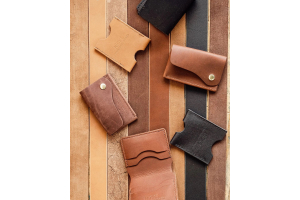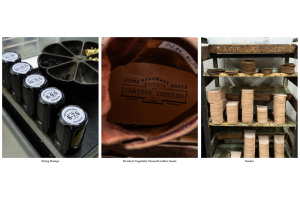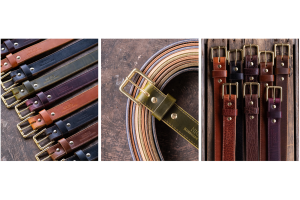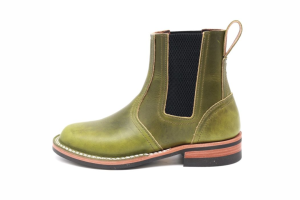Take Your Work Wear To The Next Level: Choosing The Right Boots For The Right Work
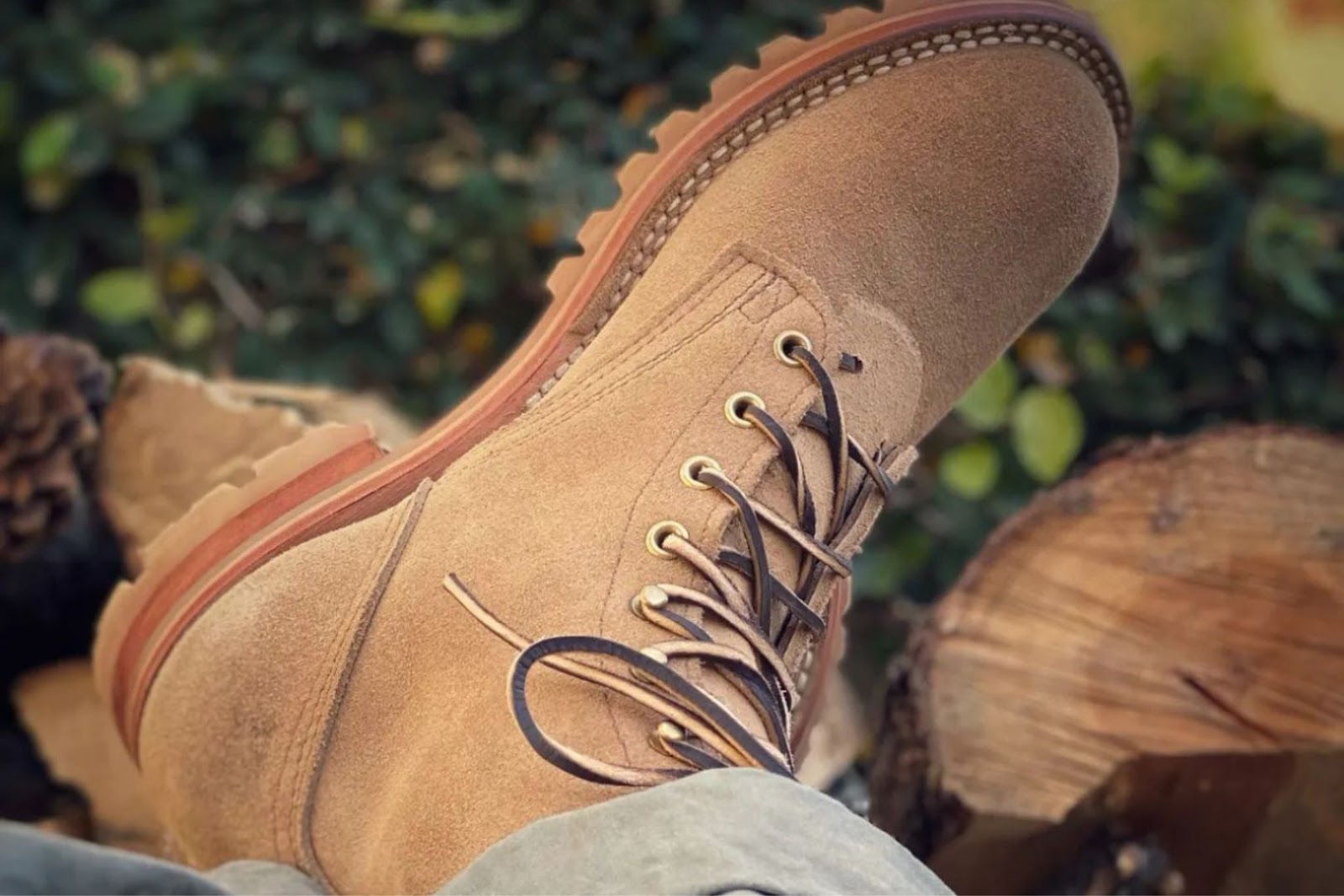
Are you tired of wearing uncomfortable and low-quality boots to work? It's time to level up your workwear with the right boots that not only provide comfort but also last longer. Whether you're in a demanding job, enjoy outdoor activities, or simply want to invest in high-quality footwear, choosing the right work boots is crucial. In this article, we will guide you through the process of selecting the perfect work boots that meet your specific needs.
Looking for rugged work boots that can handle anything you throw at them? Step into the world of Nick's Boots, where craftsmanship meets durability. Our boots are handcrafted to last, ensuring your feet stay comfortable and protected during the toughest jobs. Don't settle for less; make every step count with Nick's Boots. Shop now and experience the difference for yourself!
What Are Work Boots?
Work boots are specially designed footwear that provides protection and comfort for individuals in various demanding work environments. These boots are built to withstand heavy use and offer features like toe protection and slip resistance to ensure the safety and well-being of the wearer. They are available in different styles and materials to cater to specific work needs.
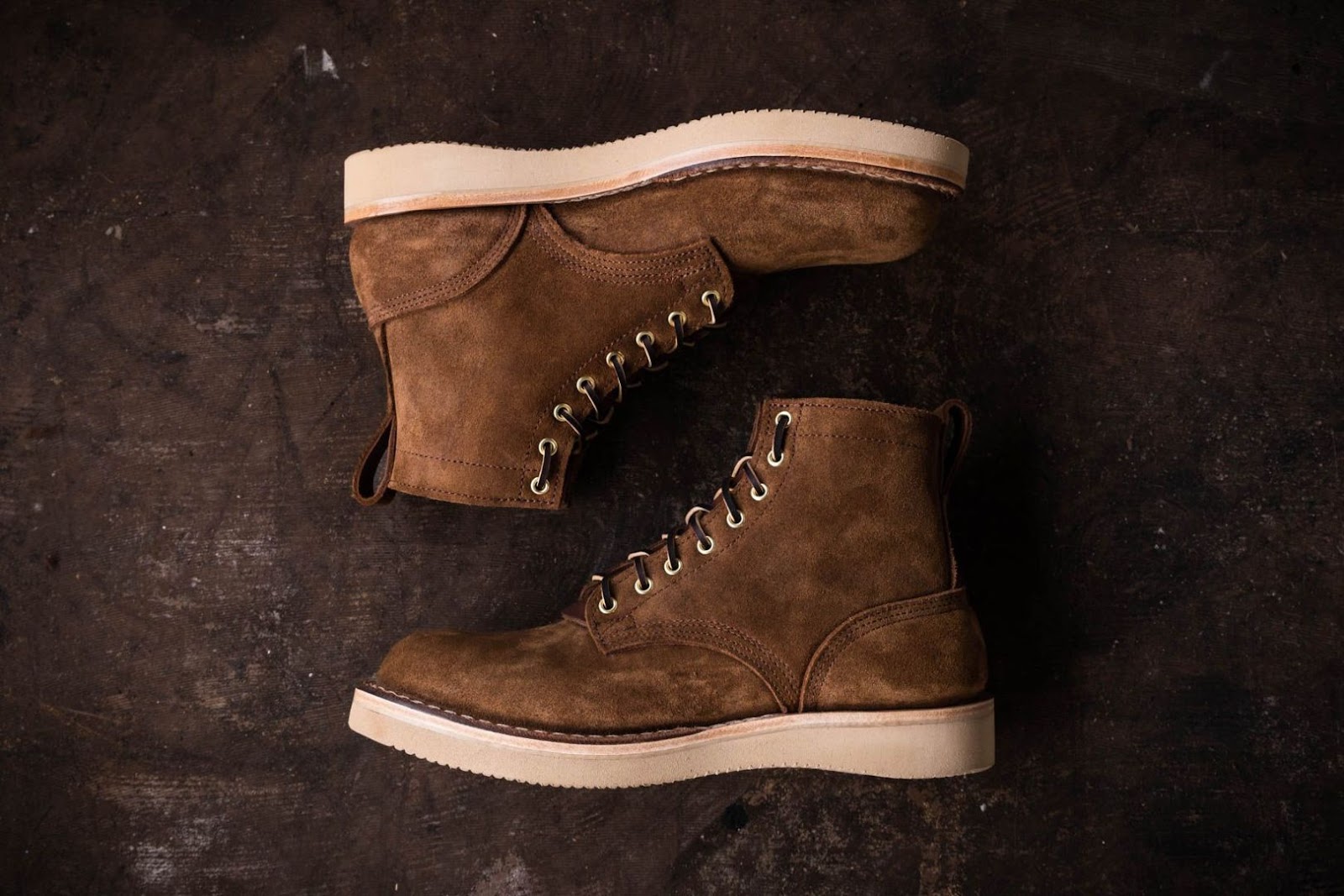

|
Discover The Craftsmanship Behind Nicks Boots! Discover Nicks Boots, your ultimate destination for fine leather goods crafted with love, passion, and unrivaled attention to detail.
Ready to wear craftsmanship and tradition? Dive into the legacy of Nicks Boots today! |
Why Are Work Boots Important?
Work boots are essential for individuals in physically demanding jobs due to their multifaceted role in ensuring safety. These boots provide crucial protection against falling objects, electrical currents, and sharp hazards, with features like toe protection, puncture resistance, and insulation. They prioritize comfort through cushioning, arch support, and moisture-wicking linings, even during long work hours.
Durability is key, with high-quality materials and robust construction, which reduces the need for frequent replacements. Additionally, slip-resistant outsoles offer traction on various surfaces, reducing the risk of slips and falls, and making work boots a vital investment for those working in challenging environments.
How Do Work Boots Work?
Work boots function by providing protection, support, and comfort to individuals in demanding work environments by incorporating several key features. The reinforced toe caps, often made of steel or composite materials, shield the feet from impact and compression hazards, such as falling objects.
Work boots feature durable and puncture-resistant outsoles that safeguard against sharp objects or uneven surfaces. Their supportive midsoles and arch support prevent foot fatigue and offer stability, reducing the risk of injuries.
Benefits Of Work Boots
Work boots offer several benefits that make them essential for individuals working in demanding environments. Here are some key benefits.
Protection
Work boots provide essential safety features to protect the feet from injuries caused by falling objects, punctures, electrical hazards, and slips.
Comfort
Designed with cushioning, arch support, and moisture-wicking features, work boots prioritize comfort, making them ideal for individuals who spend long hours on their feet.
Durability
Work boots are built to withstand heavy use and harsh conditions. Their high-quality construction ensures they last longer and provide reliable protection and support over an extended period.
Improved Performance
With their slip-resistant outsoles, reinforced toes, and other specialized features, work boots enhance performance in challenging work environments, ensuring better stability and protection.
Waterproofing And Work Boots
Waterproofing in work boots is a crucial feature, particularly for those exposed to wet or damp conditions. It involves the application of specialized materials and construction techniques to create a barrier that prevents water from infiltrating the boot. This waterproofing technology typically includes waterproof membranes or treatments, which seal the seams and pores of the boot, keeping the feet dry and comfortable.
Waterproof work boots are vital in industries like construction, agriculture, and outdoor professions, as they not only protect the feet from moisture-related discomfort but also reduce the risk of conditions like trench foot or fungal infections that can result from prolonged exposure to wet environments.
Materials In A Good Work Boot
When it comes to work boots, the materials used in their construction play a crucial role in determining their durability, comfort, and performance. Here are some of the key materials to look for in a good work boot:
Full-Grain Leather
Known for its exceptional strength and resistance to wear and tear, full-grain leather is a popular choice for work boots. It offers excellent water resistance and is highly durable, making it perfect for various work environments. At Nick's Boots, we exclusively use premium full-grain leather in our boots, ensuring the highest quality in durability and water resistance, making it an ideal choice for those seeking the best in material and craftsmanship.
Nubuck Leather
Similar to full-grain leather, nubuck leather is made from the outer side of the hide. It boasts a soft and velvet-like texture, providing a stylish look while maintaining durability. Nubuck leather is resistant to water and abrasions, making it an excellent choice for work boots.
Composite Materials
Work boots made with composite materials, such as fiberglass, Kevlar, or carbon fiber, offer advanced safety features. They are lightweight, non-metallic, and provide excellent protection against electrical hazards and extreme temperatures.
Rubber
Work boots with rubber soles offer superior slip resistance and shock absorption. They provide excellent traction on various surfaces, including wet and oily floors, making them ideal for jobs that involve prolonged standing or walking.
Insulation
If you work in cold or wet conditions, consider work boots with insulation. Thinsulate and Gore-Tex are popular insulation materials that keep your feet warm and dry in extreme weather conditions.
Understanding The Different Types Of Work Boots
Work boots are available in various styles and designs, each tailored to specific work environments and industry requirements. Understanding the different types of work boots can help you choose the right one for your specific needs. Here are some common types of work boots:
- Steel Toe Boots: These boots feature a protective steel cap in the toe area, providing excellent protection against heavy objects and compression. They are commonly used in construction, manufacturing, and industrial settings.
- Composite Toe Boots: Similar to steel toe boots, composite toe boots offer toe protection but are made of non-metallic materials like fiberglass or carbon fiber. They are lighter in weight and do not conduct heat or cold like steel, making them suitable for workers in airport security or electrical industries.
- Insulated Boots: Designed to keep your feet warm in cold environments, insulated boots are lined with special materials that provide additional insulation. They are ideal for workers in construction, agriculture, and outdoor industries.
- Electrical Hazard Boots: These boots are specifically designed to provide protection against electrical hazards. They feature insulation and outsoles that prevent electrical currents from passing through the boots, reducing the risk of electrical shocks.
- Slip-Resistant Boots: Perfect for workers in restaurants, hospitals, or any occupation that involves working on slippery surfaces, slip-resistant boots provide enhanced traction to prevent slips and falls.
Factors To Consider When Buying Work Boots
Selecting the right work boots involves considering various factors to ensure a perfect fit and optimal performance. Let’s explore some key factors to consider when buying work boots:
- Safety Features: Assess the safety requirements of your job and choose work boots that meet those needs. Look for features like toe protection, electrical hazard protection, slip resistance, and puncture resistance, depending on your work environment.
- Comfort: Working long hours can take a toll on your feet, so prioritize comfort when selecting work boots. Look for features like cushioning, arch support, moisture-wicking lining, and a well-padded collar that provides all-day comfort.
- Sizing And Fit: Proper sizing and fit are crucial for comfort and safety. Ensure your work boots have enough room for your toes to move freely and provide ample support for your feet, especially if you require custom orthotics. Check out Nicks Boots sizing guide to find the perfect fit tailored to your feet.
- Durability: Invest in work boots made with high-quality materials and superior craftsmanship to ensure they withstand the demands of your work environment. Look for features like reinforced toe caps, triple or double stitching, and high-quality hardware for added durability.
- Brand Reputation And Reviews: Research reputable brands and read customer reviews to gauge the overall quality and performance of the work boots you are considering.
Tips On Choosing The Best Work Boots For You
To help you make an informed decision, here are some additional tips on choosing the best work boots for you:
- Determine your specific needs and job requirements before selecting work boots.
- Try on different brands and styles to find the perfect fit.
- Consider the weight of the boots, especially if you need to wear them for extended periods.
- Take care of your work boots by cleaning and conditioning them regularly to prolong their lifespan.
- Consult with fellow workers or professionals in your industry to get recommendations and insights on the best work boots available.
Alternatives To Work Boots
If work boots don't align with your specific needs or work environment, there are alternative options available. Consider the following alternatives:
Safety Shoes
Safety shoes, similar to work boots, offer toe protection, slip resistance, and other safety features but in a lighter and more streamlined design. They are a suitable alternative for individuals in industries with less hazardous work conditions.
Hiking Boots
Hiking boots provide comfort, ankle support, and durability, making them suitable for individuals working in outdoor environments with uneven terrain.
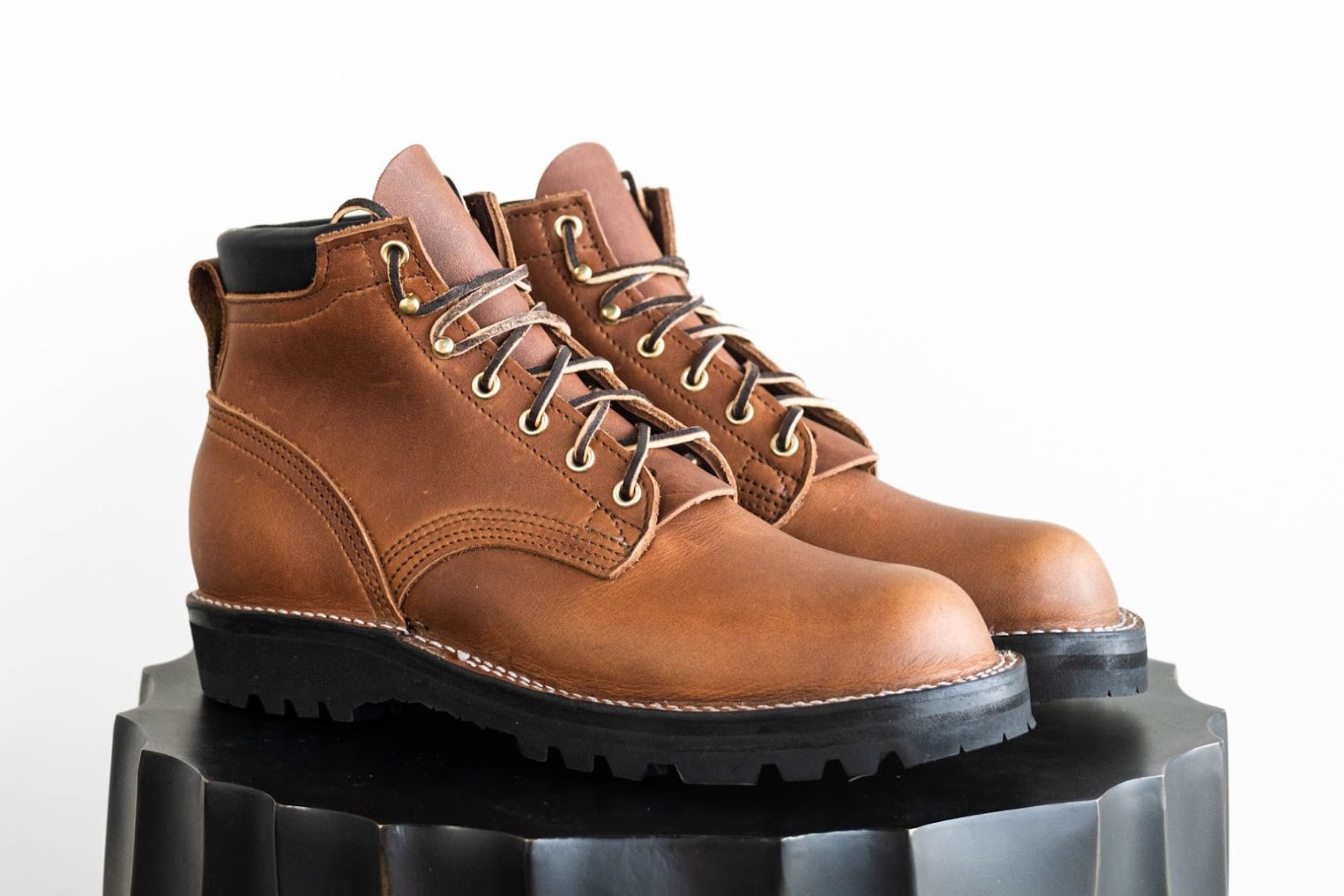

Sneakers With Safety Features
Some sneaker brands offer safety features like slip resistance, toe protection, and electrical hazard protection. These sneakers maintain a more casual appearance while providing necessary safety features.
Final Thoughts On Work Boots
Selecting the right work boots is crucial for anyone in a demanding job or seeking durable and comfortable footwear. The materials, safety features, and construction of work boots play a vital role in their performance and longevity. From full-grain leather to composite materials, waterproofing technologies to slip-resistant outsoles, work boots are designed to protect, support, and enhance your comfort.
Remember to consider your specific needs, safety requirements, and comfort preferences when choosing work boots. Investing in high-quality work boots is an investment in your safety, well-being, and long-term satisfaction. So, don't compromise on quality and choose work boots that will take your work wear to the next level.
At Nicks Boots, we set the gold standard for craftsmanship and durability. Each pair of work boots we produce is meticulously handcrafted by skilled artisans using only the finest materials. We take pride in every stitch, ensuring that your boots exceed your expectations. Our commitment to quality means your Nicks Boots are not just work footwear; they're a long-term investment in your comfort, protection, and style.
Read Also:
- Unveiling The Power Of Construction Boots: A Comprehensive Overview
- The Ultimate Guide To Work Boots: Quality And Comfort Combined
- Shoes For The Working Woman: Boots For Women
FAQs
How do I choose the right size of work boots?
Selecting the correct size for work boots is essential to ensure comfort and safety. Measure your feet accurately using a Brannock device or a traced outline on paper. Refer to the manufacturer's sizing chart for guidance, as sizes can vary.
What is the best way to clean work boots?
To clean work boots effectively, start by removing loose dirt and debris with a dry cloth. Create a mild soap or boot cleaner solution and use a soft brush or cloth to gently scrub the boots. Rinse with clean water, pat dry with a towel, and allow them to air dry. Finish by applying a leather conditioner or waterproofing agent as recommended by the manufacturer.
Can you resole work boots?
Many work boots can be resoled, extending their lifespan and saving you money. However, it's important to check with the manufacturer or a professional cobbler to determine if your specific work boots are resoleable, as some with cemented soles may not be.
Are steel toe work boots necessary?
Steel toe work boots are essential in jobs involving the risk of heavy objects falling or potential toe injuries, providing protection against impact and compression hazards. However, in less hazardous environments, lighter alternatives like composite toe caps can offer adequate protection.
How do you break in work boots?
Breaking in work boots ensures comfort during extended wear. Gradually increase wear time, apply leather conditioner or oil to soften materials, wear thick socks for cushioning, and use boot stretchers or the wet sock method if necessary. Patience is key as the boots naturally conform to your feet over time.
Can work boots be worn casually?
While primarily designed for work environments, work boots are often worn casually due to their durability and style. Pair them with jeans, chinos, or other casual outfits for a rugged and fashionable look.
How much do work boots typically cost?
Work boot prices vary based on brand, materials, construction, and safety features. On average, they can range from $50 to $500 or more. Investing in higher-quality work boots often pays off in terms of durability and long-term comfort.
Can work boots cause foot problems?
Properly fitted and used work boots generally do not cause foot problems. However, ill-fitting boots or inadequate support and cushioning can lead to discomfort, blisters, or other issues. Choosing the right size and style for your specific needs is crucial in preventing foot problems.
How can I make my work boots last longer?
To extend the lifespan of your work boots, regularly clean and condition them to prevent dirt buildup and leather cracking. Consider rotating between multiple pairs to allow each to dry and rest. Store them in a cool, dry place away from harsh conditions, replace worn-out insoles or get custom orthotics, and avoid exposure to damaging chemicals.
Are there specific regulations for work boots in different industries?
Yes, specific regulations for work boots can vary by industry and occupation. Different industries may have safety standards and requirements tailored to their unique hazards and work conditions, which dictate the type of work boots that are permissible or mandatory for workers.
